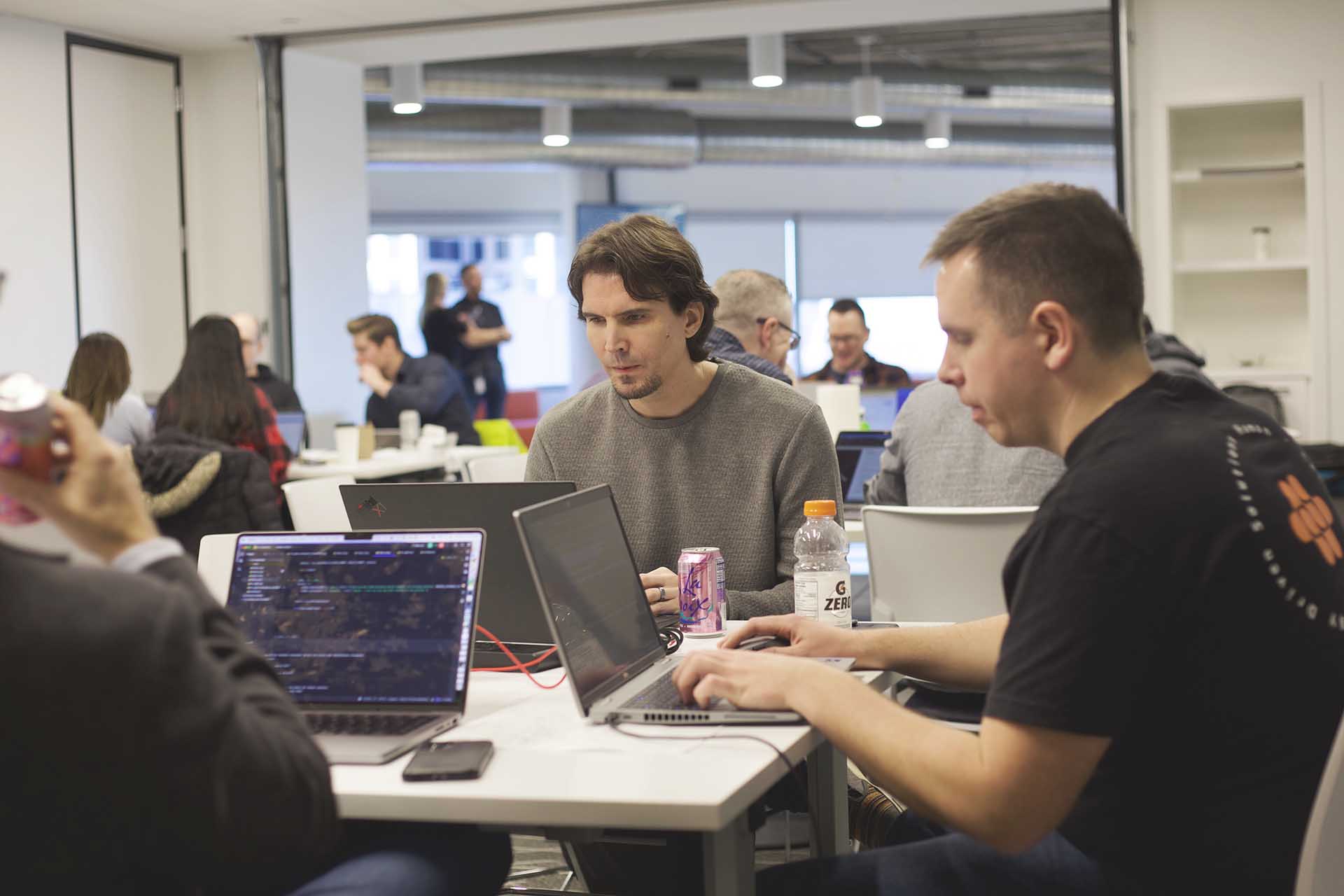For 48 hours, 25 Endavans gathered at our North American headquarters in Charlotte, North Carolina for a hackathon. The goal? To familiarise themselves with the AI software-building tools that can transform the level of expertise we bring to our clients.
During those two days, we were joined by our strategic partner and event co-host Microsoft. The hands-on learning sessions were led by five US Azure black belts—Kevin Sauer (North America Global Black Belt team leader), David Barkol, Megan Meyer, Lynn Orrell and Joey Schluchter—who aimed to show our Endava SMEs how to leverage the latest line of Microsoft Azure Generative AI offerings to build two separate solutions for our healthcare initiatives, one centered around patient care and the other on the pharmaceutical R&D (research and development) space.
The outcomes we sought were twofold. First, to build successful proofs of concept (POC) for each theme to showcase to clients. And, finally, to get better acquainted with the Semantic Kernel software development kit and other Azure tools to broaden the scope of our expertise and services we can provide our clients.
Highlights of the gathering included:
Understanding the integration potential
Day 1 began with our Microsoft partners taking us through some theory and slides covering areas such as the anatomy of a Copilot, prompt design/engineering, Retrieval Augmented Generation (RAG), the value of combining vector-based search with AI and Semantic Kernel (SK).
SK is a new open source SDK offering from Microsoft that lets you easily build agents that can call your existing code. As a highly extensible SDK, you can use SK with models from OpenAI, Azure OpenAI, Hugging Face and more. Once we had a solid morning spent going through content and having deep conversations about AI and how much it can add real business value, we then broke for lunch.
Conducting some cross-functional hacking
Attendees were split into four teams, each unit composed of a diverse array of Endavans—from developers and data scientists to product specialists, designers and business SMEs. This was an important ingredient of the hackathon event as we wanted to involve a cross-section of our people from different roles to learn and get involved in building generative AI POC solutions. At Endava, we find that a nice slice of healthy competition adds a certain element of fun to any event, so we partnered the teams to work together on our two use cases, with each team trying to outdo the others.
Consulting with experts
Following lunch on the first day, teams reconvened, receiving both support and guidance from the Microsoft expert team throughout the day to help explain things and overcome hurdles. We were stunned by not only the quality of what was built but also how much the teams could achieve in such a short time.
There were many times during the event when the datasets, models and prompts had to be tweaked, adjusted or simply redone, but that’s all part of the learning journey. But, in the end, it was a fun, enjoyable event, everyone learned a ton, and the teams were proud of what they built. The competitive juices started to flow as each of us presented to our exec sponsors and the Microsoft team picked a final winner.
What the hackathon illustrated is that generative AI brings a world of potential that can transform how many industries operate at every level. We, alongside our Microsoft partners, are excited about developing solutions using these innovative resources, and we look forward to helping you and clients worldwide explore their potential with generative AI. Learn more about the hackathon in this video!
The first version of this article was previously published on LinkedIn.
